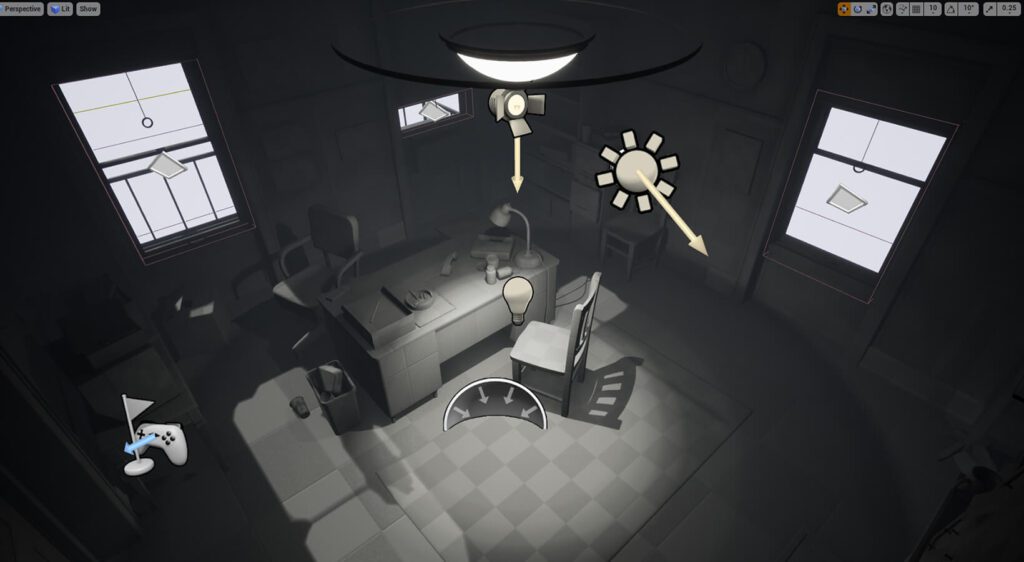Game development is a complex process that involves different stages such as planning, designing, coding, testing, and deployment. One of the most popular game development tools is the Unreal Engine, which allows developers to create amazing games using a variety of tools such as Maya, Blender, and Photoshop. The game development process begins with creating a game concept, defining game mechanics, setting a game world, and creating a game story. After the planning and design phase is complete, the next stage is coding and implementation, followed by testing and debugging. Finally, the game is deployed and released, and the development team continues to gather user feedback and release updates and patches to ensure the game remains relevant and fun.
The Ins and Outs of Game Development with Unreal Engine
Introduction
Game development is a complex process that involves various stages such as planning, design, coding, testing, and deployment. One of the most popular game development tools is the Unreal Engine, which is a powerful game engine that allows developers to create amazing games with stunning graphics and immersive gameplay. In this article, we will take a closer look at the different aspects of game development using Unreal Engine.
Planning and Design
Before starting the actual game development process, it is essential to have a clear idea of what kind of game you want to create. This includes creating a game concept, defining the game mechanics, setting the game world, and creating a game story. During this stage, you also need to decide on the target audience, the platform on which the game will be released, and the budget for the project.
Once you have a solid game concept, you can start designing the game. This involves creating a game design document (GDD) that outlines the various elements of the game such as the characters, environments, weapons, and objectives. The GDD serves as a roadmap for the entire game development process, and it is the foundation upon which the game is built.
Coding and Implementation
Once the planning and design phase is complete, the next stage is coding and implementation. In Unreal Engine, this involves creating game assets such as 3D models, textures, animations, and sound effects using a variety of tools such as Maya, Blender, and Photoshop. The assets are then imported into the Unreal Engine editor, where they can be arranged and manipulated to create the game environment.
The game mechanics are implemented using Unreal Engine’s visual scripting system, known as Blueprint. Blueprint allows developers to create complex game logic using a node-based system that is easy to understand and modify. The coding is done in C++, which is a powerful object-oriented programming language that is optimized for game development.
Testing and Debugging
Testing and debugging are essential components of game development since they ensure that the game is stable, functional, and bug-free. In Unreal Engine, testing and debugging can be done using the engine’s built-in debugging tools, which allow developers to monitor the game’s performance, detect errors, and optimize the game’s code.
Testing and debugging also involve playtesting, where the game is played by a group of testers to identify any issues such as gameplay imbalances or bugs. User feedback is essential during this stage since it helps developers refine the game mechanics and improve the overall game experience.
Deployment and Release
The final stage of game development is deployment and release. During this stage, the game is packaged and prepared for release on the target platform such as PC, console, or mobile device. The game is also submitted to various distribution channels such as Steam, the App Store, or Google Play, where it can be downloaded by users.
After the game is released, the development team continues to monitor the game’s performance, gather user feedback, and release updates and patches to address any issues. This ongoing process ensures that the game remains relevant, engaging, and fun for users.
Conclusion
Game development with Unreal Engine is a complex process that involves many stages and requires a lot of skill, creativity, and dedication. However, the end result is a game that can entertain, educate, and inspire millions of users around the world. By following the planning, design, coding, testing, and deployment process outlined in this article, game developers can create amazing games that push the boundaries of what is possible in the gaming industry.
